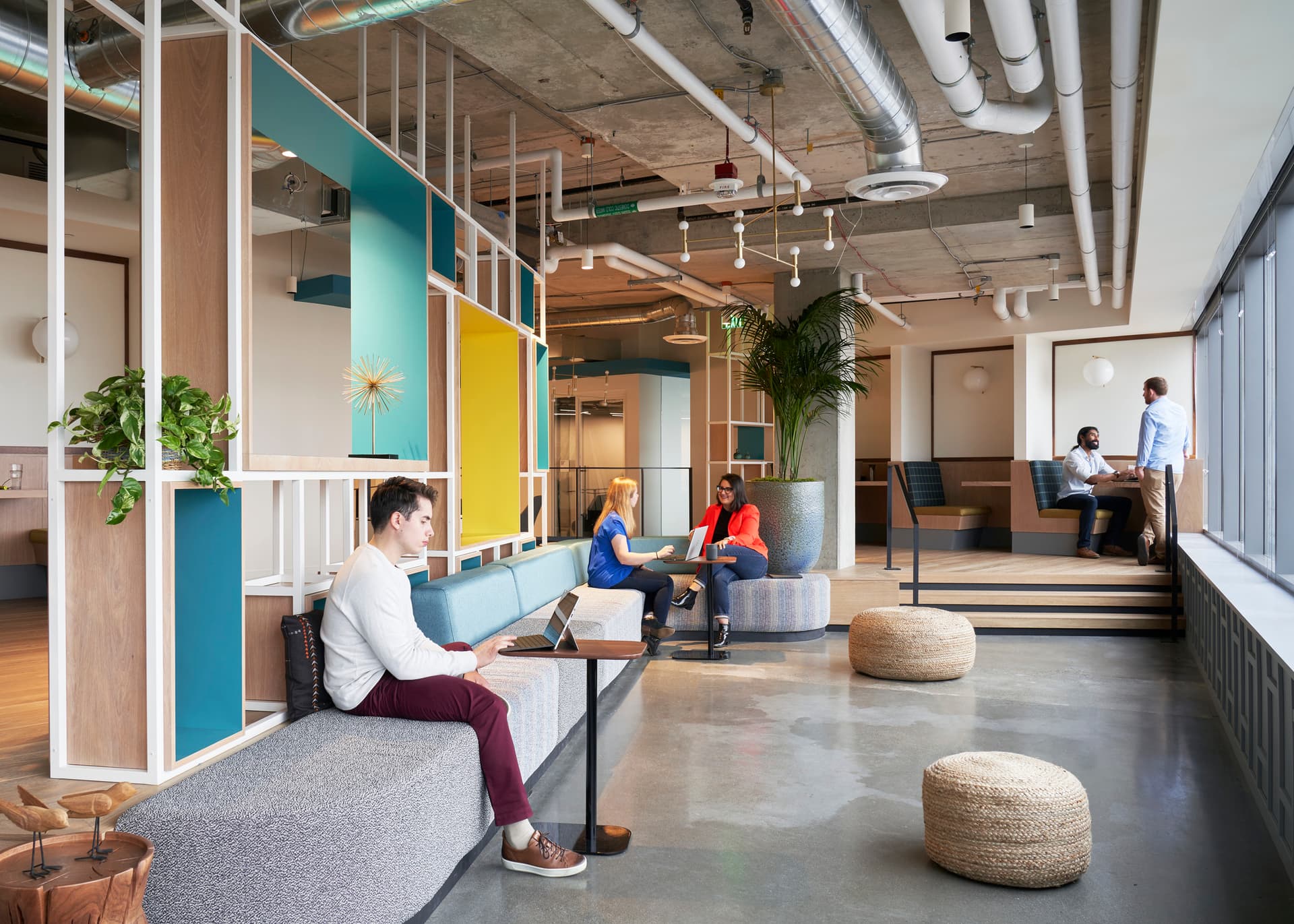Orchids, Dandelions, Tulips: When It Comes to the Workplace, Which Flower Are You?
Debates about hybrid work have slowed, but conversations around office design that enables people to do their best work remain at the forefront of the cultural zeitgeist. In discussions with clients and colleagues alike, we know that environments that address the diverse needs of employees—specifically, allowing them the focus and control over their environment previously only available at home or in a private office—are critical.
Though we all work in unique ways and require different surroundings to be productive, there are certain conditions that all of us need to do our jobs. Spaces that allow us to focus, and that support executive function —the mental processes that help us set and carry out goals, solve problems, make plans and manage emotions—help people to perform at their best.
That’s where the concept of “Orchids, Dandelions and Tulips” comes in. Originally popularized by psychologists to understand how different groups respond to and are impacted by their environment, we partnered with NBBJ Fellow and developmental molecular biologist Dr. John Medina to apply the concept of orchids, dandelions and tulips to office design, something that hasn't previously been explored. The resulting framework posits that, in the workplace, most people identify with one of three groups: orchids, who need quiet, personalized zones to focus; dandelions, who can work well anywhere; and tulips, who require a balance of open and private areas.
Here, we provide a useful framework for how to apply orchids, dandelions and tulips to build more inclusive workplaces.
Orchids: Rare Beauty
Named after the delicate and uncommonly beautiful orchid, these employees bring unique contributions to organizations through their creativity and hyperfocus—but only if, like Goldilocks, conditions are “just right.” Orchids are predisposed to overstimulation and sensory overload, and are more easily distracted by noise, interruptions and cognitive load than others. In the workplace, they gravitate toward solitary, private spaces where they can find deep focus away from the bustle of the rest of the office.
As designers, we support orchids by embedding features that give them autonomy over their surroundings and opportunities to control acoustics and other sensory inputs. For example, circulation paths that put semi- and fully enclosed quiet areas on the periphery rather than in the center of the action allow orchids to watch what others are doing while maintaining a comfortable distance—a concept called “prospect and refuge.” In addition, integrating nature-infused niche calm zones to increase serotonin helps orchids regulate their nervous systems. For one client, we created three-sided “pocket parks” consisting of booths, pods and ample greenery lining the perimeter, providing places for respite free from visual and auditory distractions.
Dandelions: Bloom Where You’re Planted
Like the hardy, sunlit flower, these team members can plant themselves almost anywhere to flourish. Dandelions get their energy from stimulating surroundings and the ability to work alongside colleagues, valuing opportunities for spontaneous connection. Because they thrive on the energy of their surroundings, they also become drained in what they perceive as quiet, low energy environments.
Designing for dandelions means creating distinct zones for collaboration. In the design of offices, these “dandelion zones” include centrally located hubs with open teaming and meeting areas, communal tables for coworking, and “mixer” tables that include screens so employees working remotely can feel more integrated into the office. Deliberately laying out the office floorplan with circulation designed to direct people to the center of activity and layering in amenities and other positive stimuli like music or art creates buzz among coworkers.
In addition to informal and teaming spaces, designing individual workspaces supported by technology that meets the needs of job families—groups of jobs within an organization that have similar work, skills, knowledge and career paths—can support dandelions' ability to focus. Solutions like dual or extra monitors, docking capabilities or teleconferencing equipment contribute to a more active, dynamic environment.
Tulips: Garden Variety
Less sensitive to distractions than orchids but with a greater need for balance than dandelions, tulips comprise the majority of office workers, approximately 40%. Tulips often shift between shared and private areas depending on the kind of work they’re doing. They need to curate their surroundings to think but also benefit from the energy of social interactions. Design for tulips incorporates a diversity of spaces, with desk areas for collaboration and enclosed areas like conference rooms for focus.
Regardless of whether you are an orchid, dandelion, tulip, it’s critical that your office forgoes the “one size fits all” ethos in favor of a more choice-based approach. And by going deeper into the science and philosophy around focus and preference, we can help companies prioritize—and design for—a more inclusive workplace.










